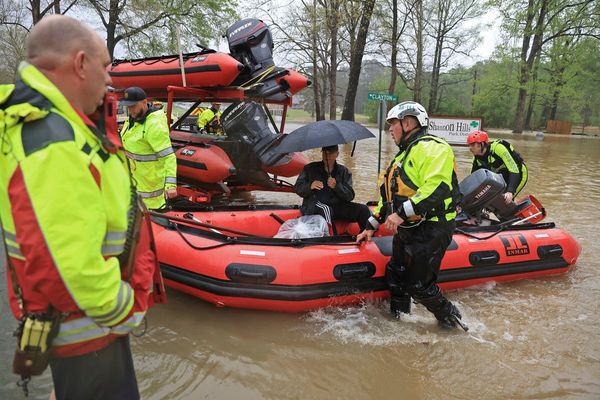
The Colorado River, which provides drinking water to 40 million people in seven U.S. states, is drying up, straining a water distribution pact amid the worst drought in 12 centuries, exacerbated by climate change.
California split from the six states of Arizona, Colorado, Nevada, New Mexico, Utah and Wyoming on Tuesday in the face of a U.S. government deadline to negotiate their own supply cuts or face possible mandatory cutbacks by the federal government.
"What happened today was a step forward," said Kevin Moran, a water policy specialist at the Environmental Defense Fund.

"Six of the seven basin states are playing catch-up to reduce water use from the Colorado River, which is absolutely critically needed after 20 years of drought and the impacts of climate change," Moran told Reuters.
When the states struck their agreement 100 years ago, it envisaged the river could provide 20 million acre-feet of water a year. An acre-foot (1,233 cubic meters) of water is generally considered enough to supply two urban households per year.
But over the last two decades, the actual flow has dwindled to 12.5 million acre-feet on average, leaving state water managers with more rights on paper than existing supply.

California receives the largest allotment, 80% of which is consumed by its $50-billion agricultural industry.
Many experts see its decision to sit out the agreement as fuelling the chances that the water fight will end up in the nation's highest courts.
"We have a situation where some of the water rights holders in California are saying, 'We're not willing to give up more water, and we think we have legal rights and we're willing to go to court if we have to'," said David Hayes, a lecturer at Stanford University Law School.
"And there's not enough time to litigate these issues," added Hayes, a former top climate aide to President Joe Biden.
He saw a need for drastic conservation efforts to protect reservoirs from overuse and drought worsened by climate change, a situation that if left unchecked could threaten supply from the Hoover Dam to the city of Las Vegas or California.
Although California was deluged for weeks from late in December by seven atmospheric rivers that dumped up to 30 inches (76 cm) of rain over some areas, little of that reached the Colorado River basin.
Despite predictions for more such atmospheric rivers, of growing size and frequency, California cannot solve its long-term crisis without major investments to capture more storm water, restore flood plains and recycle wastewater.
A report in the journal Nature last year found 2000-2021 to be the driest 22-year period for southwestern North America in at least 1,200 years.
"Something will have to give," said Sharon Megdal, director of the University of Arizona's Water Resources Research Center,
as temperatures rise, mountain snows melt faster in spring, and the state lacks capacity to store the runoff.
A letter signed by the six states showed they all recognised the need for a change in operating procedures for the Colorado River and deliveries from it, she added.
"I think people would like to believe that we can somehow figure out a way to keep these economic activities, keep our kind of economies and livelihoods, going," Megdal said.
"But it's going to be a drier future."
(Reporting by Liliana Salgado and Temis Tormo; Writing by Clarence Fernandez; Editing by Nick Macfie)







